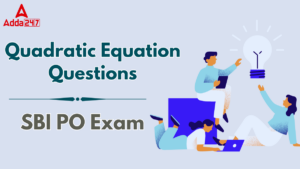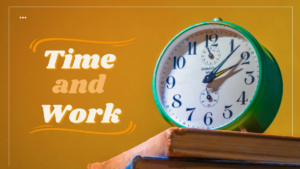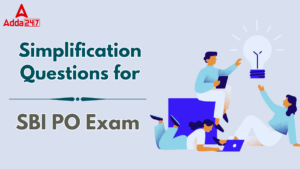Q1. In a set of prime and composite numbers, the composite numbers are twice the number of prime numbers and the average of all the numbers of the set is 9. If the number of prime numbers and composite numbers are exchanged then the average of the set of numbers is increased by 2 and during the exchange of the numbers the average of the prime numbers and composite numbers individually remained constant, then find the ratio of the average of composite numbers to the average of prime numbers (initially).(a) 7 : 13
(b) 13 : 7
(c) 9 : 11
(d) 13 : 15
(e) Can’t be determined
Q2. Abhishek sellsfruit juice mixture using apple juice and watermelon juice. Abhishek prepares this mixture by drawing out a jug of apple juice from a 10 litre container filled with apple juice, and replacing it with watermelon juice. If Abhishek draws out another jug of the resultant mixture and replaces it with watermelon juice, the container will have equal volumes of apple juice and watermelon juice. The volume of the jug, in litres, is(a) 2
(b) > 2 and ≤ 2.5
(c) 2.5
(d) > 2.5 and < 3
(e) > 4 and ≤ 5
Q3. Ages of A, B, and C are in geometric progression while ages of A, Q and R is in arithmetic progression. If ratio between common difference of arithmetic progression formed by second group (A, Q, R) and common ratio of geometric progression formed by first group (A, B and C) is 2: 1 and total sum of ages of first group (A, B, C) is 182 and total sum of second group (A, Q, R) is 60 then which of the following options given below will be the ages of A, B, C respectively.
(a) 126, 42, 14
(b) 42, 14, 126
(c) 14, 42, 126
(d) 36, 60, 86
(e) Can’t be determined
Q4. A circle with radius 2 unit is placed against a right angle. Another smaller circle is also placed as shown in the adjoining figure. What is the radius of the smaller circle.
(a) (3-2√2) unit
(b) (4-2√(2 )) unit
(c) (7-4√2) unit
(d) (6-4√2) unit
(e) (5-3√2) unit
Q5. In an examination, there are 500 students out of which 150 students passed the first paper and 350 passed the second paper. 50 students passed both the papers. Find the probability that if a student selected at random has failed in both the papers.
(a) 1/5
(b) 1/10
(c) 3/10
(d) 3/5
(e) 2/5
Directions (6-10): Each question below is followed by two statements A and B. You have to determine whether the data given in the statement is sufficient for answering the question. You should use the data and your knowledge of Mathematics to choose the best possible answer.
Give answer (a) if the statement A alone is sufficient to answer the question, but the statement B alone is not sufficient.
Give answer (b) if the statement B alone is sufficient to answer the question, but the statement A alone is not sufficient.
Give answer (c) if both statements A and B together are needed to answer the question.
Give answer (d) if either the statements A alone or statement B alone is sufficient to answer the question
Give answer (e) if you cannot get the answer from the statements A and B together, but need even more data.
Q6. Triangle ABC has angle BAC equal to 90°. What is the measure of the angle ABC?
A. The angle ACB is 35°.
B. The angle CBA is 55°.
Q7. X, Y and Z are three consecutive even numbers (not necessarily in this order). What is the sum of these numbers?
A. The difference between X and Z is 4.
B. One-third of Y is 14.
Q8. What is the salary of P, in a group of P, Q, R, S, T and U, if average salary of group is Rs. 35,000?
A. Total of the salary of Q and S together is Rs. 54000.
B. Total of the salary of T and U together is Rs. 58000.
Q9. What is the rate of interest p.a. on an amount of Rs. 6,000 deposited in a Bank?
A. The simple interest for four years is Rs. 3600.
B. The difference between the simple interest and compound interest is Rs. 894.0375.
Q10. What is the number?
A. 20% of that number is one fifth of that number.
B. 5/6th of that number is less than that number by 15.
Directions (11-15): In each of these questions, two equations (I) and (II) are given. You have to solve both the equations and give answer
(a) if x > y
(b) if x y
(c) if x < y
(d) if x y
(e) if x = y or no relation can be established between ‘x’ and ‘y’.
Q11. I. 2×2 + 13x – 7 = 0
II. 2y2- 5y + 3 = 0
Q12. I. 2×2-15x + 28 = 0
II. 4y2- 16y + 15 = 0
Q13. I. x2 + 8x + 16 = 0
II. y2 = 16
Q14. I. x2- 2x – 24 = 0
II. y2 + 8y = 0
Q15. I. x2 + 4x = 0
II. y2 + 10y + 25 = 0




 Quadratic Equation Questions for SBI PO ...
Quadratic Equation Questions for SBI PO ...
 Time and Work Formula, Concept & Apt...
Time and Work Formula, Concept & Apt...
 Simplification Questions for SBI PO Exam
Simplification Questions for SBI PO Exam




